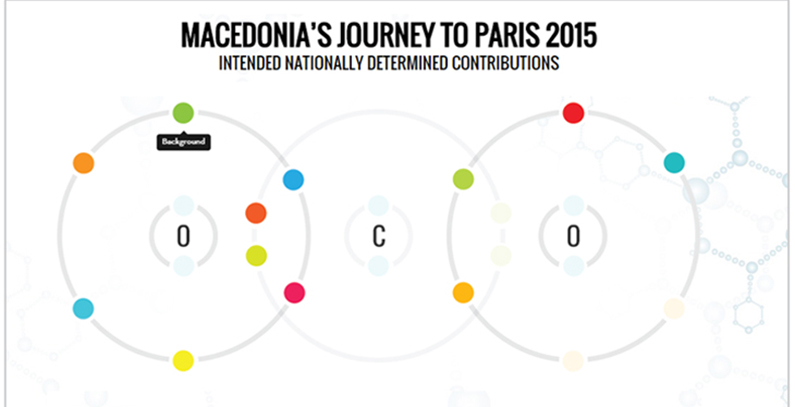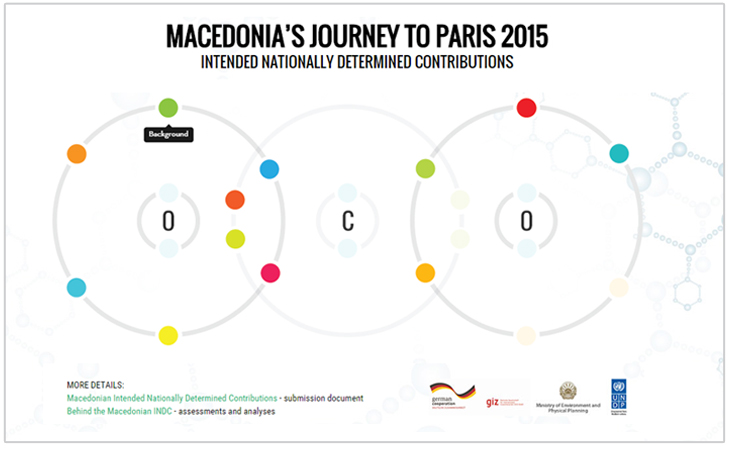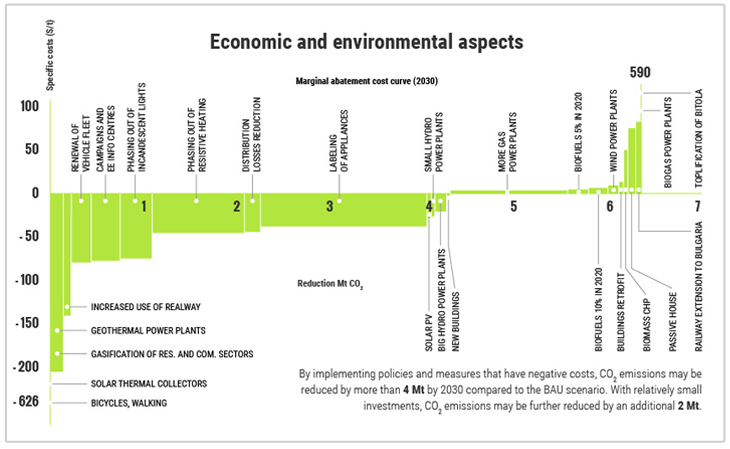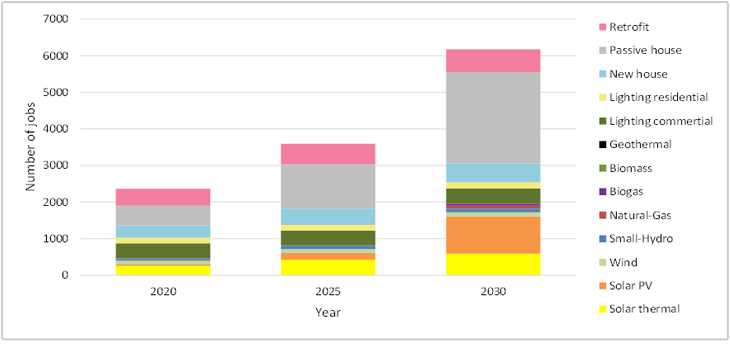
This article has been developed as per the assessment of the climate change mitigation potential within the Macedonian Intended Nationally Determined Contributions on Climate Change to the UNFCCC by a group of authors:
Prof. Dr. Neven Duić, Faculty of Mechanical Engineering and Naval Architecture, University of Zagreb,
Prof. Dr. Nataša Markovska, Research Center for Energy and Sustainable Development, Macedonian Academy of Science and Arts (RCESD-MASA)
Pavlina Zdraveva, United Nations Development Programme and
MSc Aleksandar Dedinec, Research Center for Energy and Sustainable Development, Macedonian Academy of Science and Arts (RCESD-MASA)
The world’s attention in December was on the COP21 climate conference in Paris. Never before have there been so many high-ranking officials in one place, because of what is at stake – the survival of our planet. And all stressed the need to sign a global agreement to reduce greenhouse gas emissions, valid for all countries – because no country or region will be spared from the effects of climate change.
In order to prepare for this agreement, all countries were asked to develop and determine their own national contributions or, in climate change terminology, Intended Nationally Determined Contributions (INDCs).
Macedonia is fully committed to the global efforts for GHG emissions reduction. With support from the United Nations Development Programme and GIZ, the Ministry of Environment and Physical Planning submitted the Macedonian INDC in August, as the 23rd country in the world.
The document notes the reduction of carbon dioxide emissions from fossil fuels combustion by 30%, that is for 36% at a higher level of ambition, by 2030 compared to the business as usual scenario. Fossil fuels combustion covers almost 80% of the total GHG emissions in the country with the sectors of energy supply, buildings and transport having a dominant share.

Figure 1. Dynamic infographic – Macedonian INDC
Macedonian INDC includes the reduction of carbon dioxide emissions from fossil fuels combustion by 30%, that is for 36% at a higher level of ambition, by 2030 compared to the business as usual scenario.
The assessment behind the numbers is a result of hard work and excellent cooperation among various stakeholders, institutions and donors. It is based on detailed technical assessments performed by a wide team of experts and it capitalizes on previous relevant documents.
Bringing people together amplified their impact, the exchange on what works best and, for the first time, made a step further, by combining environmental and economic aspects with the social aspect. It turned out that more than half of the considered mitigation policies and measures have negative specific costs.
 Figure 2. Marginal abatement cost curve for 2030
Figure 2. Marginal abatement cost curve for 2030
It turned out that more than half of the considered mitigation policies and measures have negative specific costs.
Moreover, policies and measures that mitigate climate change do not present only a burden because of their implementation costs; they also have positive co-benefits, one of them being increased employment. For the first time in Macedonia, number of domestic jobs created as a result of the implementation of INDC mitigation measures in the area of energy efficiency and energy supply was assessed, using macroeconomic input-output method, based on investments, and factors from literature.
It turned out that these co-benefits offer great opportunities – by implementing energy efficiency measures in buildings and by introducing low-carbon energy supply technologies (renewables and gas), about 6,000 green jobs can be created by 2030.
And here is how the rationale behind the summary numbers looks like:
Energy efficiency measures in the buildings sector have the highest potential for the creation of new jobs. Introducing higher efficiency standards to new buildings and retrofitting old ones could open 3,500 jobs by 2030.
A switch to LED lighting, which has much higher added value, will create employment, since new channels for sales and more innovative installation will be possible. It is estimated that investment of USD 1 million (EUR 0.92 million) will create 5.1 direct jobs, and 4.2 jobs are indirectly created (supply goods and services).
It is difficult to estimate jobs related to more efficient transport. These jobs will mainly be in the vehicle production and supply chains, and as such not in Macedonia. On the other hand, if electrification of personal vehicle is started, then there will be jobs related to chargers and smart chargers, which would be additional equipment installed in homes, businesses and on public parking places. Also, some jobs would be lost at petrol stations, petrol station servicing and fuel handling. Still, by 2030 big breakthrough of electrification is not expected, so that is why these jobs are not assessed.
It is also difficult to assess jobs related to modal shift towards the public transport, use of bikes, walking and railway. They should be related to new investments in alternative modes of transport, as well as to the maintenance of appropriate technologies.
Using more renewables for power generation, in particular solar photovoltaics, wind, biomass, hydro, geothermal and landfill gas, would open some 1,300 jobs by 2030.
Investments in energy efficiency in industries are also hard to assess because they are very specific and each industry and each process is not a subject of our analysis.
Using more renewables for power generation, in particular solar photovoltaics, wind, biomass, hydro, geothermal and landfill gas, would open some 1,300 jobs by 2030, mainly in the sector of photovoltaics. The segment is rather labor intensive, especially if small installations are placed on roofs. Establishing such a sector has best employment perspective among supply technologies.
On the energy supply side, policies and measures include an increase of efficiency of existing power plants, a switch to lower-carbon fossil fuels and renewables in power, heat and transport applications.
Increasing energy efficiency of current power plants will generate only a small number of jobs during the retrofit phase, but in the long run retrofit will also bring automation, so no new jobs are expected.
Using more renewables for heat supply is also a good option: solar thermal, biomass, and heat pumps. Establishing solar thermal sector may open 600 new jobs by 2030.
 Figure 3: Number of domestic green jobs
Figure 3: Number of domestic green jobs
Using more biofuels for transport may also be good for employment in case that biofuels are locally produced. However, local production of biofuels seems not to be an economically viable option in Macedonian conditions.
This initial assessment reveals a wealth of existing opportunities to scale up the reductions of greenhouse gas emissions along with an increase of the green jobs potential. It creates a space of opportunities for the whole Balkan region – effective, readily achievable set of actions to reach a prosperous and stable environmentally healthy world for all.



















